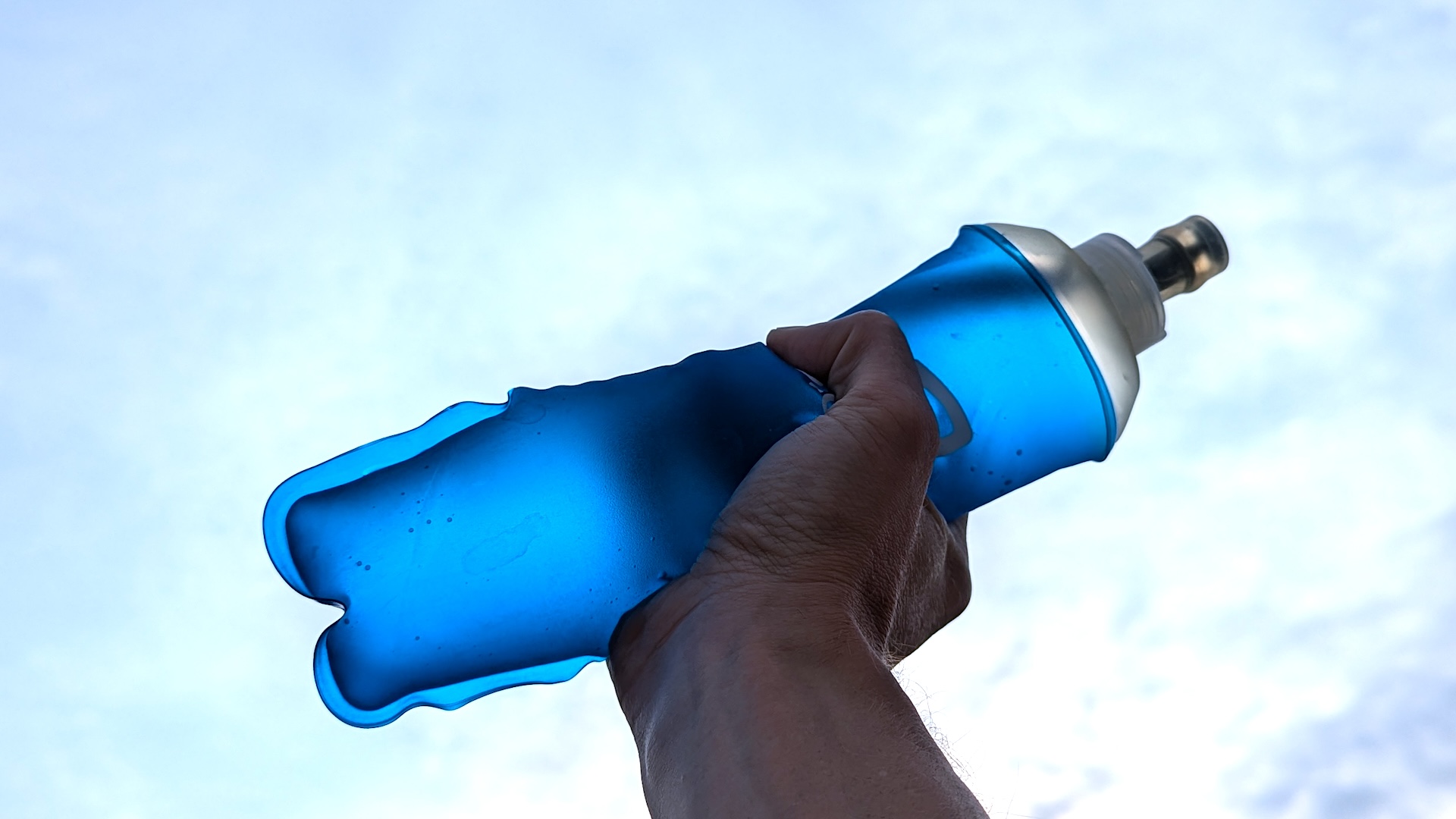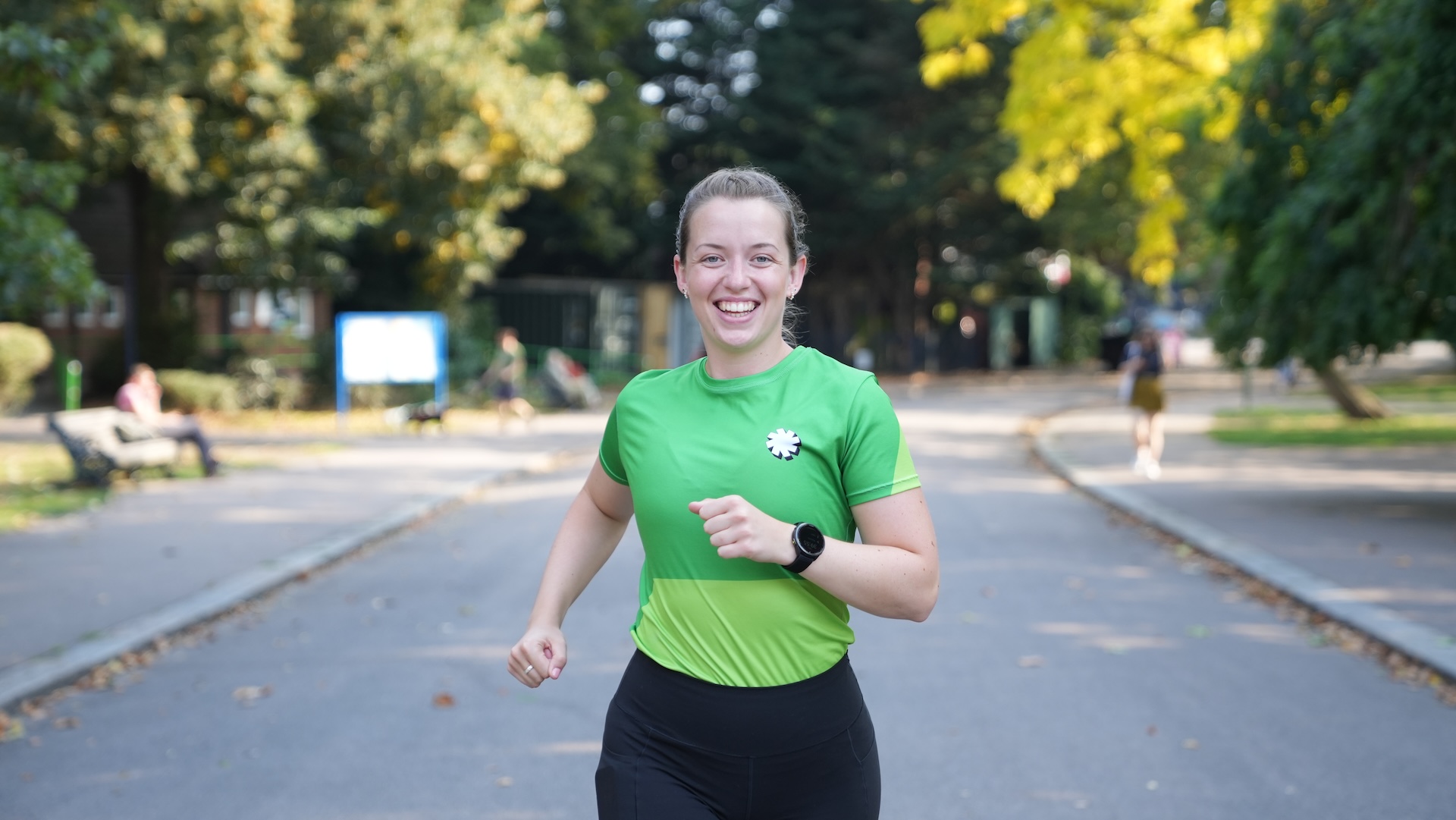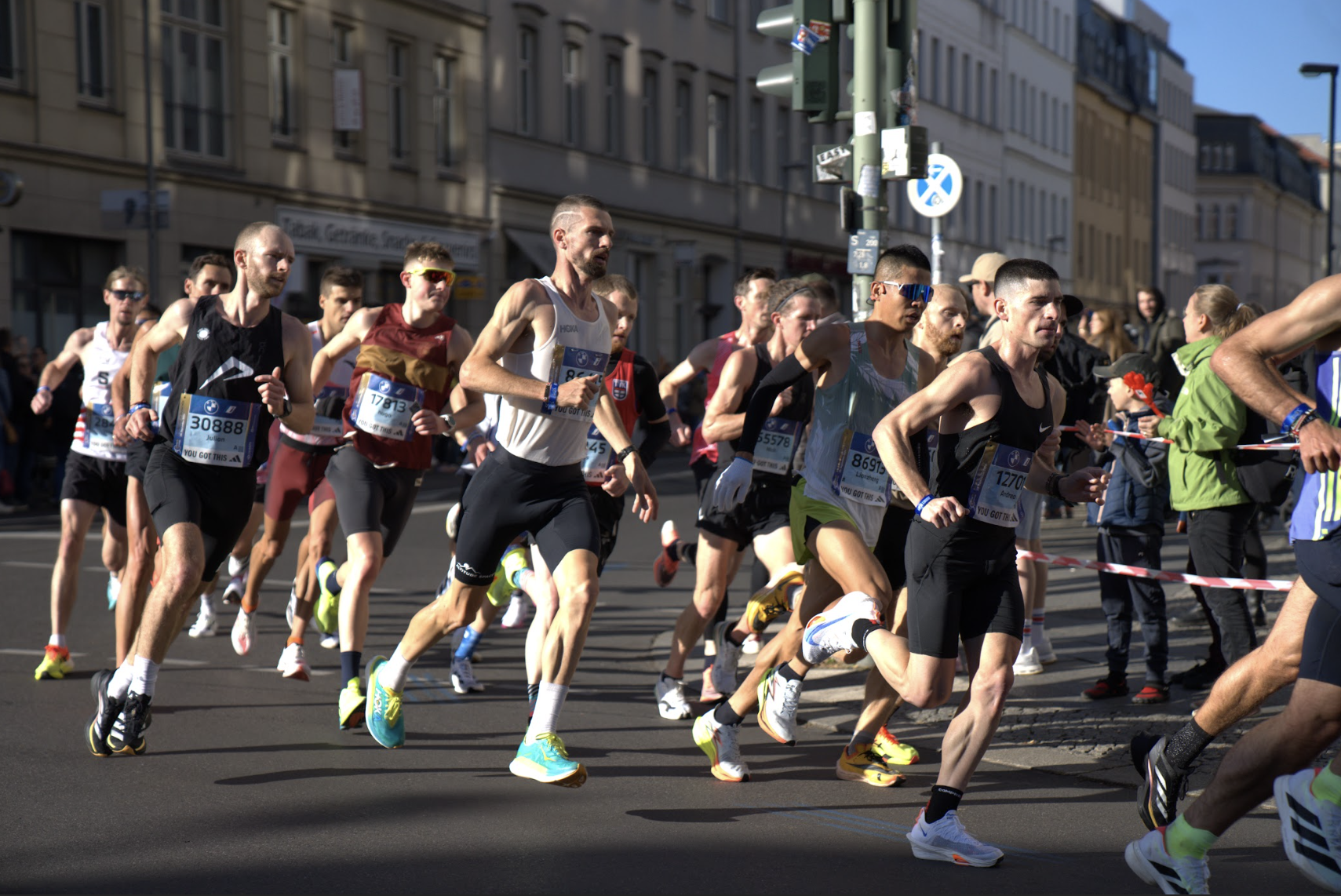How To Carry Water On A Run

You’re heading out on a run and you know you’ll need some water, but what are the best ways to stay hydrated on your runs? And what’s the best advice on carrying water while you run?
WHY DO YOU NEED TO DRINK WHEN RUNNING?
When we run or exercise, our bodies generate heat, and to try and regulate our core temperature we sweat – the sweat rises to our skin and it evaporates, which makes us feel cooler.
Sweat is 99% water. That water is carried in the blood, via the blood plasma, and when it reaches sweat glands, the water is drawn out of the blood and up to the skin, and the more we sweat, the more we become dehydrated.
Even a small amount of dehydration can make exercise feel harder because it increases our heart rate while also decreasing our blood volume – so our heart is working harder but it’s less able to pump oxygen-rich blood into our muscles, meaning we feel more tired. As we become more dehydrated, our decision-making can also be affected. But if we hydrate while running we can delay the negative symptoms of dehydration.
This is especially important on a hot day (here’s more top tips about running in warm weather), where we should begin the run well-hydrated, then drink water while we’re running, and always re-hydrate at the end of every run to reduce the impact of dehydration.
DO YOU NEED TO DRINK WATER ON EVERY RUN?
No, not necessarily. If it’s a cool day and you’re running for under 60 minutes, then you may not need any fluid (that depends on how thirsty you get!), but if it’s a hot day or you’re running for more than one hour, then you really should consider carrying fluid or knowing how you can hydrate during your run.
WHAT SHOULD YOU DRINK WHEN RUNNING? (AND WHAT SHOULD YOU AVOID?)
Water, energy drink, cordial and watered-down fruit juice are all great to drink, and while we’ll say ‘water’ throughout this piece, you can hydrate with all of those drinks.
And avoid fizzy drinks, dairy and alcohol on your run – save all those for after exercise!
It’s also good to add electrolytes because when we sweat we lose important electrolytes like sodium and potassium, and we need to replace them. If we’re just on a short run then you may not need electrolytes, but if you’re on a long run, or it’s a hot day, then definitely consider adding electrolytes to your drink – the longer you run, or the more you sweat during that run, the more you’ll require electrolytes. And you can add these by an electrolyte tablet or by having a sports drink.
HOW MUCH SHOULD YOU DRINK DURING A RUN?
Everyone sweats a different amount and loses different amounts of electrolytes (some people are very ‘salty sweaters’), and there are many variables including a person’s gender, weight, effort level, and the conditions they’re running in.
Research suggests that the average person sweats 1-1.5 litres per hour of exercise (but some people sweat as much as four litres!). It’s not practical to rehydrate this much, and most people can’t tolerate drinking more than 750ml per hour while running. You should aim to drink at least 300ml per hour, and increase that to 500-750ml if you’re a heavy sweater or able to consume more while running.
Drink a little, often. And don’t wait until you feel thirsty as that may mean you’re already dehydrated. You should take lots of smaller gulps of water during your run, perhaps every 10-15 minutes, and don’t just chug loads of water once an hour as that can lead to a sloshing feeling in the stomach, or even to making you feel sick.
The same advice is true in a race. Most road races have water at least ever 5km, so you can stay hydrated as you run. It’s good advice to drink as much as you can tolerate, especially in longer races like a marathon where you’re more likely to become dehydrated.
BUT HOW DO I CARRY FLUID WHILE RUNNING?
You could just hold a bottle while you run, and plenty of people do that, but that’s not something that all of us want to do, so what are our options?
Some people will wear hydration packs. These are vests (like light rucksacks) which have space in the front and/or back to hold water bottles (2 x 500ml in the front) or a bladder (1-2 litres in the back). Just fill up the bottles or bladder and head off on your run! These are great for longer runs and trail runs as you can also carry extra kit like additional layers, a phone, food/nutrition, and first aid.
If you don’t like to wear a pack for your runs, then you can get a hydration belt which you wear around the waist. Some of these have holsters for small plastic bottles, while others have compartments which can securely hold a soft flask (250-500ml). You could also use something like a FlipBelt which can easily carry a 250-350ml soft flask. These belts also allow you to run with other items like a phone or gels.
Another choice is to find running tights or leggings with pockets on the side. These pockets are often designed to carry a mobile phone, but they perfectly fit a 250-350ml soft flask on each side.
Belts and tights are good options for training and also for racing, where they allow you to carry your own run nutrition and don’t need to rely just on what’s on the course (so you can carry an energy drink you’re familiar with rather than having what’s provided in the race).
Or if you’re happy with a handheld, then you can get a bottle with a hand grip, or there are bottles (soft flask and plastic) which can be strapped to your hand so you don’t need to grip it during a run.
WHAT IF I DON’T WANT TO CARRY WATER?
Then you need to plan your run a little better!
You could put water bottles out in front of your house and run loops, returning to drink as often as you need to. You could also take a water bottle and stash it somewhere secure, like a bush, and return to it every few miles or kilometres.
Maybe you can plan a route which has water fountains, allowing you to stop briefly to drink before carrying on. Or you could just stop at a shop during your run and buy something to drink.
These are also relevant tips for if you need to refill your bottles during a long run, which is something you’ll likely need to do. Just learn where there are water fountains, or plan to stop in a shop to buy some extra fluid.
***
How do you carry water on your runs? What’s the best tip you have for taking water with you?



























Running News
Ingebrigtsen Stars at World Athletics Indoor Championships 2025 – Plus All The Winners!
Sam Ruthe Is First 15-Year-Old To Run A Four-Minute Mile!
Eliud Kipchoge Will Run The 2025 Sydney Marathon!